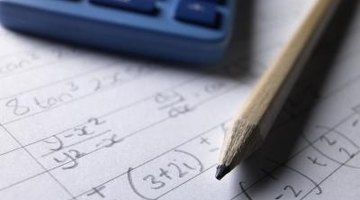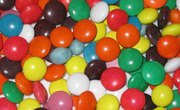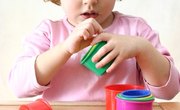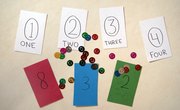Generally middle school students study pre-algebra and focus on solving multi-step equations, including those with decimals and fractions, learning to graph equations, solving ratios and proportions and calculating mean, median and mode. Because the concepts and skills required to be successful in pre-algebra are more complex, it is important to provide students with hands-on activities to help them see and experience the concepts firsthand, rather than just relying on the textbook and worksheets.
Measure Me
Provide students with a meter stick and give them the task to measure another student. Students should measure the following items for their partners in both meters and millimeters: height, length of an arm, length of foot, circumference of head, length of thumb, arm span, farthest distance the student can jump, highest point the student can touch without jumping and width of the thinnest fingernail. Have students record all measurements and determine at the end of the activity which measurement, meters or millimeters, is most useful for each item.
Candy Probability
Provide students with a bag of colored candies such as M&Ms or Skittles. Students should open their bags and count the number of candies inside. After counting the total number of candies, have students count the candy by color, writing down how many of each color is in the bag. Students can then use those numbers to figure out the probability of choosing a certain color from the bag. For example, if there are 20 M&Ms in the bag and five of them are red, the student would write the probability of choosing a red M&M as 5/20 and simplify it to be 1/4. Complete this activity for all colors.
Distributive Property Role-Play
To teach students the distributive property, a(b+c) = ab+ac, assign students in the class to stand up front and hold pieces of paper with one part of the equation on them. For example, one student will hold the letter a, another the letter b, and third the plus sign and so on. Visually display the distributive property using students. Then have students turn over their pieces of paper to reveal numbers. Have a student come up and re-arrange the students to demonstrate the distributive property.
Order of Operations Cards
Provide students with an equation written on index cards, with an index card to represent each number or symbol in the equation. Students can use the phrase "Please excuse my dear Aunt Sally" to remember the order of operations to use when solving an equation because each word represents a different step (parentheses, exponents, multiplying, dividing, addition and subtraction). To begin solving the equation, students should solve everything in parentheses and remove those cards, replacing them with an index card to represent the new number. Students continue through the order of operations to solve the equation until only an index card with the solution is left.
Mean, Median, and Mode
After giving a math quiz, provide students with the class grades. Be sure to remove student names from the results to keep from embarrassing students. Have students determine the mean, median and mode for the class. The class can then create a graph on poster board or chart paper to represent the results of the class. Classes can compete with one another to see who has the highest mean on each quiz. Track the results by class for all quizzes and tests given in a quarter, awarding a point to each class with the highest mean, median and mode. At the end of the quarter, reward the class with the most points.
Related Articles
References
Writer Bio
Stacy Zeiger began writing in 2000 for "Suburban News Publication" in Ohio and has expanded to teaching writing as an eighth grade English teacher. Zeiger completed creative writing course work at Miami University and holds a B.A. in English and a M.Ed. in secondary education from Ohio State.











